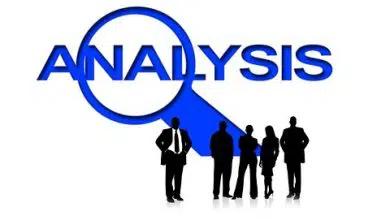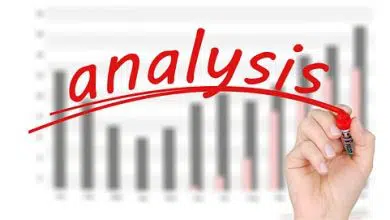The theoretical aspects of Environmental Economics are still in a stage of infancy and most of the treatment depends on microeconomic theory, based on hypothetical conditions and formulating theoretical hypotheses. The readers may find that the discussion to be too abstract to apply to the practical environment problems. However, a carefully worked out elementary theories are essential for understanding and also for further development of this Social Science, in order to make it scientific.
Market Failure And Externalities in Environmental Economics
We might have known already that the environment performs three important functions to provide necessary comfortable living to humankind They are : (i) supplying of natural commodities, like water, air, land and other material resources which are very essential for living; (ii) helping to produce many material and non-material things, as well as services for our comfortable living, by supplying adequate raw materials for the same. (iii) Thirdly, the environment assimilates all the by-products of our production and consumption.
The environment is the natural receptacle or sink of unwanted materials, which are digested and assimilated by slow process of degradation and decomposition. Thus, the environment at the outset acts as a supplier of quality natural resources. It acts as a producer in the process of production; and finally acts as waste assimilator.
By performing these essential functions, the environment sustains life in this planet. Not only this; by these processes, the environment enhances the welfare of human beings.
But, the real problem lies in the fact that the environment supplies all the “goods” needed “free of cost”. This means that the environmental commodities have no market and as such no price; or we can call “zero price”. The first problem relating to environmental goods is the absence of commodity market and zero price of these commodities, though the true price of these commodities is positive. This is called ‘Market Failure’ in Economics.
Market Failure in Environmental Economics
In the environmental context, market failure refers to the difference or divergence between the price of resources and their price that would exist, if there were markets for them, and if they were supplied optimally. This market failure arises because of the external factor in the process of production and consumption of goods relating to environmental commodities.
In this context, externality means that the production or consumption of one individual’s activity or an activity of the firm will affect the standard of living of another individual or firm, about which the former is not bothered, due to absence of market transaction between the former and the latter.
This can be illustrated by saying that the smoke emitted by a factory in the atmosphere causes damage and reduces the quality o f air used by the inhabitants, about which, the firm running the factory is not concerned for the annoyance created.
There are many services that the public desires, but for which it is difficult to charge an appropriate price. Goods and services supplied to one consumer may automatically get provided to many others. A classic example is pesticide spraying to destroy malaria-bearing mosquitoes in a particular locality. The benefit will accrue even beyond the targeted locality and it is very difficult to exclude non purchasers of pesticide spray.
In the case of malaria elimination, a pesticide spray company cannot charge individual residents, since all the non-payers in the region will also benefit from the spraying. For this reason, no private business firm will come forward to supply public health measures, elimination of crime in the city or any other services which can be considered public goods, as there are no ways to market such a good or service.
In this context, it should be understood that economic activities will affect not only the welfare of the supplier and the purchaser of the product, but also unintentionally yield incidental benefits or cause incidental injuries to some third party or parties, not directly involved in the exchange. These unintended side effects are called externalities or spillovers. This means, these activities spill over upon persons outside the immediate transaction.
In our discussion of externalities, we are interested primarily in the adverse externalities or spillovers that constitute the source of many of our environmental problems. This is called negative externalities. Air pollution is a good example of this. A factory that emits smoke into the atmosphere does not do so as an end in itself. It is only an incidental side effect in the process of production.
However, this spillover effect constitutes health hazard to the people in the neighborhood which is omitted entirely from the factory’s calculation of its receipts and costs. The fact that the business firm running the factory causes adverse externality without paying any cost, helps to explain the failure of the market mechanism which does an imperfect job of protecting the environment.
A firm may require ‘P’ units of steel, ‘Q’ units of electricity and ‘R’ units of pure air through its discharge of smoke. The firm has to pay for the steel and electricity as inputs. But the input of ‘R units of pure air is usually free of charge to the firm, and is not considered in its cost calculations.
Consider this firm emits smoke which increases laundry and cleaning cost of people residing miles around, and aggregate laundry bills of these people far exceeds the cost of smoke-elimination devices. Since the firm does not pay the laundry bills of the people, there is no financial pressure to induce the firm to limit its output of smoke.
In this example, a part of the cost of firm’s product is borne by the people who pay the resulting laundry bills. The firm will expand production, not because of growth of consumer demand for its product, but by the implicit subsidy that occurs when others pay part of the real cost.
Thus, we can describe externality as a product of an institutional arrangement under which a number of society’s resources are given away free. Fresh air, clean water, and attractiveness of the neighborhood are all available for mere taking and that is precisely where the difficulty lies, a zero price.
This is an invitation to the user to waste the resources, for which he pays nothing. This problem of externality is the result of absence of well defined property rights. No one owns the clean air and other goods of the environment and as a result, there is no price attached to them.
However, these resources of the environment are not in unlimited quantities; that is to say that these resources are scarce and we have failed to use the price system to apportion these scarce resources properly.
This type of negative externalities and the failure of the market system have become very pervasive and general in the economic world of production and consumption. This suggests the need for policy makers to use effective instruments of policy to deal with externalities. “Externalities are not exceptional phenomena; they are everywhere about us, embedded in the working of our economy.”
Environmental quality is an economic good in the sense that it is scarce and this quality can be degraded by over use or abuse. Because of the externality of this factor due to market failure, there is a cost imposed on the society, but not accounted by the firm causing the degradation of the quality of the environment.
This is to say that externalities, like pollution disrupt the smooth and efficient functioning of the market system. If the services of the environment are priced and brought into the market system imposing cost to the producer-firm, then the pattern of use of free environmental goods would be entirely different and the welfare of the people would be enhanced.
Thus, the basic theory of environmental economics has its genesis in “Welfare Economics”. As a matter of fact, many Economists consider environmental economics as a branch of Welfare Economics.




